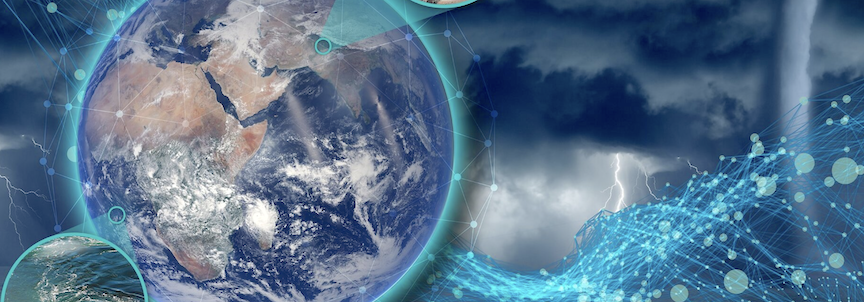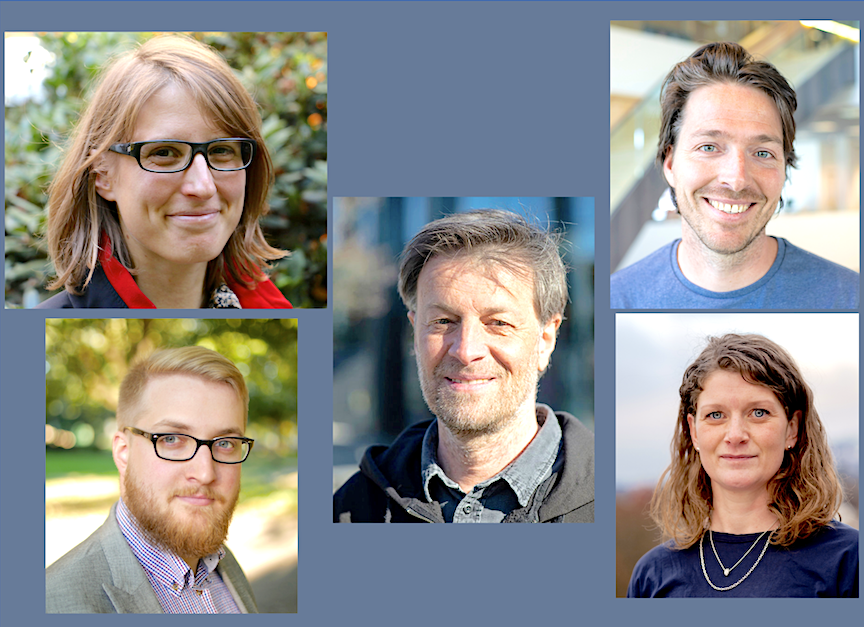
Honoring individual scientists and teams of scientists that have contributed to the innovative use of Earth observation data, ESA and the European Geosciences Union (EGU) are happy to announce the winners of this year’s prestigious Excellence Award.
Susanna Ebmeier, from the University of Leeds in the UK, wins the individual award. Susanna’s work focuses on using satellite images to further the scientific understanding of volcanic processes.

A team led by Andreas Kääb, from the University of Oslo in Norway, wins the team award. The team’s work focuses on using satellite data to measure how the volume of glaciers is changing in response to climate change.
Over recent years, Earth observation has been going through a significant transformation. New and complementary Earth observation instrument capabilities, artificial intelligence, machine learning and big data technologies have opened a wealth of opportunities for science and applications.
The joint ESA–EGU Earth Observation Excellence Award celebrates these new opportunities and rewards researchers who are in the early phases of their career and who have made an outstanding contribution to the innovative use of Earth observation data, primarily from European satellites. Two types of awards were up for grabs: team award and an individual award.
The announcement of the winners follows an independent evaluation of nominations led by the European Space Sciences Committee (ESSC) of the European Science Foundation.
There will be a celebration for the winners on Tuesday 25 April at the EGU General Assembly, which takes place in Vienna, Austria.
Individual Award winner, Susanna Ebmeier, developed new methods that make satellite radar images more useful for monitoring volcanic hazards and for understanding the fundamental science of volcanic deformation.
Susanna said, “I investigated ways of measuring the change in topography at volcanoes caused by the effusion of lavas using both radar phase and amplitude signals. I’m also interested in how to separate volcanic signals from noise in the signal, either by better characterizing atmospheric and other noise, or by using machine learning methods.

“Another theme of my research has been how to best interpret regional and global datasets of volcanic deformation made possible by satellite methods. European datasets have been fundamental to my research — especially Copernicus Sentinel-1, the Italian Space Agency’s CosmoSkyMed and the German Aerospace Center’s TerraSAR and Tandem-X.”
The winning team’s Global Glacier Mass Continuity project measured glacier volume changes and glacier flow with unprecedented accuracy using Earth observations. They combined both variables to better understand how glaciers are responding to climate change.

Team leader Andreas Kääb said, “The team, which was made up of several PhD students and postdocs, measured and analysed glacier thickness change using satellite laser and altimetry data, satellite optical stereo data and digital elevation models, to yield worldwide glacier mass budgets.
“The analysis of these data enabled several major steps forward in glacier and Earth science, such as new insights in processes underlying spatio-temporal variability and instability of glacier flow and improved understanding of dynamic thickness change effects.
“Our results also helped to define and justify ESA’s newly-selected Earth Explorer 10 Harmony mission.”
Simonetta Cheli, ESA’s Director of Earth Observation Programs, said, “We offer our congratulations to the well-deserved winners of the Earth Observation Excellence Award. We were very impressed with their research, which not only reflects their scientific excellence but also highlights the many new opportunities that Earth observation offers.”
In evaluating the nominations put forward for the award, the European Space Sciences Committee felt that the finalists also deserve a mention. These being Mariette Vreugdenhil from TU Wien in Austria nominated as an individual researcher for her work on satellite soil moisture for risk mitigation, and Lestyn Woolway from Bangor University in the UK for his work on the physics and hydrology of lakes and their link to climate.
There were also two finalists for the team award.
One team, led by Dominic Fawcett from the University of Exeter in the UK, works on ESA’s RECCAP-2 project, which promotes the use of Earth observation to support estimates of national greenhouse-gas emissions and sinks for the Global Stocktake process.
The other team, led by Gustau Camps-Valls from the University of Valencia in Spain, for their work on the development of novel Artificial Intelligence methods to analyse Earth observation data, with the goal of modelling and understanding the complex interactions between the various components of the Earth system.
